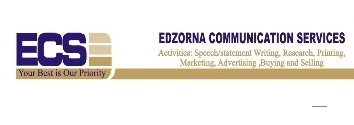Access to education has steadily increased over time while the quality of education has oscillated. This finding is one of the key takeaways from the Access to and Quality of Basic and Secondary Education in Ghana (2000 – 2023) Report released by the Ghana Statistical Service in collaboration with the Ministry of Education on 25th March 2025.
The report presents statistics on enrolment, teacher availability, and student performance in core subjects at JHS and SHS using data from the Education Management Information System (EMIS).
The trend analysis of enrolment presented in the report indicates that between 2001 and 2003 Kindergarten Gross Enrolment Rates (GER) more than doubled from 51 percent to 122 percent, Primary GER increased from 80 to 90 percent, JHS GER increased from 64 to 98 percent and SHS GER tripled from 25 to 72 percent.
Despite high Gross Enrolment Rates, statistics on Net Enrolment Rates (NER), which measure age-appropriate enrolment, indicate that significant proportions of pupils at all four levels of education were not within expected ages. In 2023, Kindergarten NER was 66 percent indicating that two in every three children aged 4 to 5 years were enrolled in kindergarten. Eight in every 10 children (80%) 6 to 11 years were enrolled in primary school. At the JHS (47 percent) level, less than half of the children 12 to 14 years were enrolled in at the age-appropriate level.
Gender disparities in education access have decreased over time with gender parity being achieved at the primary level. However, gender gaps persist in the quality of education, as measured using core subject pass rates. The gender differences in pass rates are more pronounced in English and Mathematics compared to science and social studies at both the JHS and SHS levels. In 2021 WASSCE for instance, boys (70%) outperformed girls in mathematics (60%) while English pass rates where higher for girls (60%) than boys (50%).
Quality of education records stark variations across regions in comparison with access to education. For instance, pupil-to-trained-teacher ratios in the Northern, North East, and Savannah regions, are greater than 50 pupils per trained teacher, more than twice that of Greater Accra (25 pupils per trained teacher). Disparities were also observed in pass rates in core subjects: the Bono Regions recorded the highest WASSCE Mathematics pass rates in 2019, almost five times the rate in the North East Region (21.0%), which recorded the lowest pass rate. Larger disparities are observed for English pass rates with the highest region, Bono (75.3%) recording pass rates more than 10 times higher than the rates in two regions – North East (5.1%) and Savannah (8.0%).
The report also provides information on progress towards policy targets in the Education Strategic Plan (2018 – 2030) and finds that while policy targets have been reached at some levels for gross enrolment, gender parity, pupil to teacher ratios, national targets for net enrolment have been missed across all four levels of education.
Recognizing the timely release of the report amid the ongoing National Education Forum, a platform for shaping strategic education reforms, the Minister for Education, Hon. Haruna Iddrisu during his keynote address, noted “the findings of this report will provide invaluable insights to inform the discussions and policy decisions of the National Education Forum Planning committee, ensuring that our strategies are grounded in data and aligned with national priorities.”
The launch event featured a presentation by the Government statistician, Prof. Samuel Kobina Annim who highlighted the key takeaways from the report. The Ambassador of the Danish Embassy, Tom Noring and the Chairman of the National Education Forum, Prof. K. T Oduro, also commended the progress made but stressed that without urgent investment in teacher training, infrastructure, and school resources, the system could become overwhelmed.
The report provides statistics to monitor progress toward the achievement of Sustainable Development Goal 4 (Quality Education), Goal 5 (Gender Equality), and Goal 10 (Reduced Inequalities) by measuring progress in access, gender parity, and learning outcomes.
by Edzorna Francis Mensah







